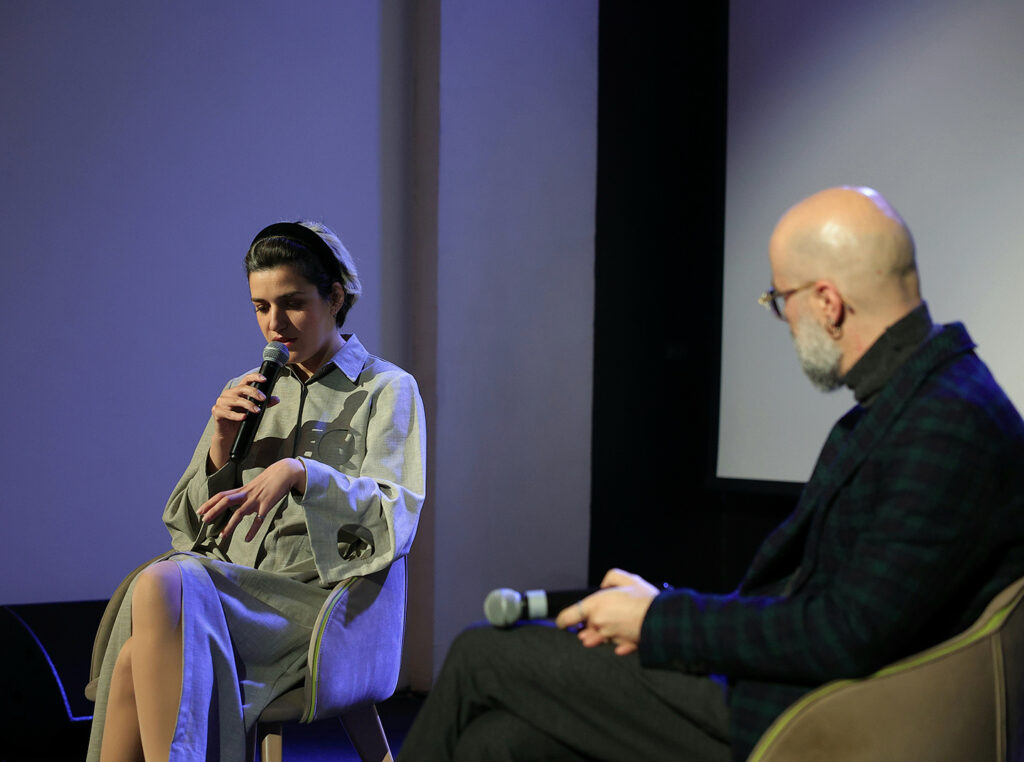One and multiple
Architecture is one of the categories of human expression that fills our perception of everyday reality; Kevin Lynch has brilliantly described the pleasure of looking at cities as a special pleasure, regardless of the banality of what we are looking at, and this pleasure is linked to the idea that the city is a temporal art:
«Like an architecture, a city is a construction in space, but on an enormous scale, an artefact that can only be perceived over long periods of time.» (Lynch, 1964)
In defining our wanderings in cities as a journey through time, we can better understand what we perceive when we come across buildings that remain seemingly immobile, yet constantly in transformation due to the life that moves around them. The Youth and Sports Palace, located in the center of Prishtina (Kosova) is an example of these transformations taking place over the years around and within us. Built in 1977 by architect Živorad Jankovic following a competition held in 1974, it was intended to symbolically represent the Serbian-Albanian brotherhood, starting with the name chosen for the complex: “Boro-Ramiz” (named after two heroes of the Yugoslav partisan war; Boro Vukmirovic and Ramiz Sadiku) and its shape, designed as two blocks that come close together until they almost touch, and then run parallel vertically, as in the meeting of two waves. In her video “W-Here is Balkan?” Lori Lako gives us an aerial view of the Youth and Sports Palace, which makes us see the architecture from an unprecedented point of view, which links our perception to the lack of brotherhood of the Serbian and Albanian peoples, and which has transformed the architecture itself by showing it as the exposed ribs of a wounded body, a body lying moribund and on whose skin someone, despite everything, writes an invitation to live the world together[1]. Children standing on the steps of the architectural complex meet inside it, in its belly, under the exposed ribs to kick an enormous ball on the surface of which is printed the geographical map of the Balkans, almost as if trying to kick away that very idea of national identity, divisive rather than inclusive, of which that wounded body remains a visual testimony. The Balkans ball is kicked towards a way out, which seems to stand there more as a question than a certainty.
In the second video of this series of works that Lori Lako dedicates to the Balkans, “May the best of your yesterdays be the worst of your tomorrows”, the same aerial vision accompanies us inside the former Incel factory in Banja Luka, Bosnia, and Herzegovina, which produced cellulose, viscose, and paper from 1954 (the year it opened). Remaining in business until the mid-1990s, the factory closed following the war in the Balkans. The area subsequently had to be decontaminated due to soil contamination, and as the video shows, the first form of life to re-appropriate the ruins left by man is nature, which covers the destroyed architecture of the warehouses. As we enter this post-apocalyptic semi-desert scenario, we are suddenly confronted with a space-time short-circuit, three men drinking rakia at a small table as if they were sitting quietly in a neighborhood bar. And as in the most common form of socializing that we can find in all the Balkan countries, they accompany their drinking with toasts, always dedicated to a hope of good fortune. The toasts follow each other, faster and faster until a final, fatal clash of glasses breaks in a missed wish. The men have disappeared, the only surviving glass is already inhabited by an insect, the small table remains there, with its white tablecloth, sadly moved by the wind as if in sign of surrender, and the shards of glass from the glasses testifying to new ruins.
In both videos, we are constantly confronted with identity, both individual and collective, and it always seems as if the artist wants to suggest how the attempt to define it unambiguously nevertheless leads to failure. Failure that seems to be inherent in architecture itself, which should visualize the collective identity of a people while helping us to construct our identity. Gilles Deleuze seems to help us when he defines the categories of “one” and “multiple” as not antithetical, but converging in a concept of intermezzo, in a “between” that describes the succession from one lived state to another through memory. It is precisely the possibility of being ‘between’ two situations without attempting to define them unambiguously that seems to be a possible way out of these continuous failures, an answer to the question found in the belly of the wounded body of the Palace of Youth and Sport.
Stefano Romano
[1] Let’s live the world together, from the video W-Here is Balkan?, Lori Lako, 2023






